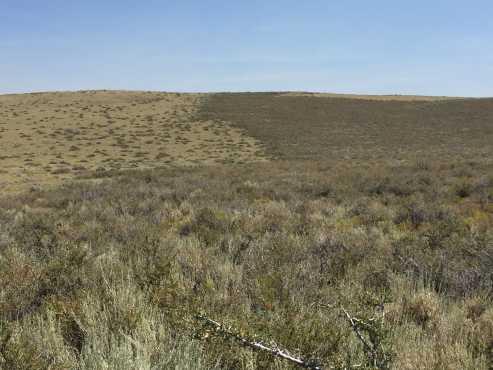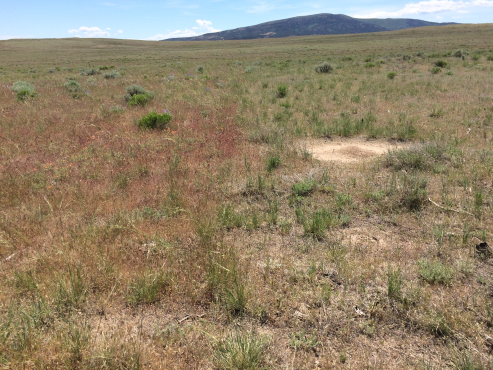
Prior to 1976 the largest contiguous stand of bitterbrush in North America was centered at Bitterbrush State Wildlife Area near Maybell, Colorado. Fires and cheatgrass invasion have resulted in the loss of two-thirds of this stand, which provides critical winter forage for big game. Although some bitterbrush recovery has been noted, as is evident in the left-hand side of this photo, in many areas recovery has been too slow to outpace the return of fire.

Indaziflam herbicide can help control cheatgrass, as shown in the right-hand side of this photo. We are testing to see if indaziflam will block bitterbrush germination. Also note the harvester ant mound. Less shrubs and more cheatgrass may have increased ants, which feed on bitterbrush seed. Understanding feedbacks between weeds, ants, and rodents may help CPW design more effective bitterbrush recovery strategies.
Led by
Trevor Balzer
Project Status
Ongoing
Research Objectives
- Test effectiveness of indaziflam herbicide for cheatgrass control. Determine if indaziflam is compatible with bitterbrush germination. Compare indaziflam’s effects to NutraFix, a cheatgrass control fertilizer.
- Determine the relative importance of weed control, rodent cache pilfering, and ant herbivory on bitterbrush establishment from buried seed.
Project Description
Big game heavily utilize the remnant patches of bitterbrush which have escaped fire at Bitterbrush State Wildlife area. Protecting these patches and promoting their expansion will likely require finding a technique for cheatgrass control that is compatible with bitterbrush germination. It may also require finding parts of the landscape where seed predation is lower. Rodents and harvester ants compete for bitterbrush seeds, and cheatgrass invasion has likely changed both rodent and ant populations. Although bitterbrush relies on rodents to help disperse their seeds, and most bitterbrush plants grow from abandoned rodent caches, too much rodent cache pilfering could prevent bitterbrush from re-establishing. Our experiments include weed control treatments, ant exclusion, and rodent exclusion cages to help unravel these effects.
Associated Publications

